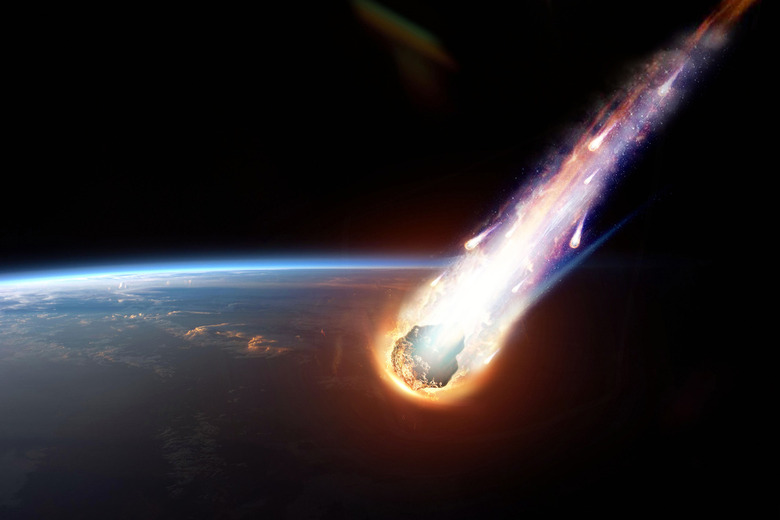Alien Tech Could Be Hiding At The Bottom Of The Ocean
Alien tech could be on Earth already. At least, that's what some astronomers seem to think. Eight years ago, a meteor that astronomers believe was roughly two feet long crashed into the Earth. The meteor exploded into tiny meteorites, which then fell into the South Pacific Ocean.
Now, one astronomer by the name of Avi Loeb seems to think that this meteorite could have been alien tech.
Could an interstellar meteor hide alien tech?
The meteor in question has been the topic of conversation among many astronomers since it crashed into Earth's atmosphere. As the NPR reports, many believe that the object comes from interstellar space. That would make it the first interstellar object of its size to impact the Earth. Because of its possible origins, Loeb believes the meteorite could be alien tech, now deposited on Earth.
It is an interesting claim and one that many other astronomers don't fully agree on. After all, this isn't the first time that a meteor has hit Earth's atmosphere. It also isn't the last, as meteor showers send meteors and meteorites streaking into the Earth's atmosphere every year. Further, there's just an overall lack of data to indicate that his object might be alien in origin.
CNEOS 2014-01-08 is the official name of the meteor. And, as I noted above, it was first detected in 2014, thanks to satellites built to monitor our sky. In 2019, a study led by undergraduates studying astrophysics suggested that the object came from interstellar space. And from there, the theories only grew, including the birth of the theory that alien tech now awaits discovery on Earth.
Loeb says that the meteor was moving at around 40 kilometers per second when it slammed into the lower atmosphere and exploded. This most likely means it wasn't bound to our Sun, which is where the beliefs that it came from beyond our solar system first sprouted. Then, in April, a memo from U.S. Space Command seemingly confirmed that theory.
5/ From the @AsteroidWatch tabletop exercise earlier this year, we learned that as long as the simulated asteroid was in the space domain, #USSPACECOM was the supported combatant command within the @DeptofDefense.
— U.S. Space Command (@US_SpaceCom) April 6, 2022
With the theory that it came from interstellar space seemingly confirmed, this only gave room for even more theories to grow. And now Loeb is launching an expedition to retrieve pieces of the meteor from the bottom of the South Pacific Ocean. This expedition will cost roughly $1.5 million, and Loeb hopes it will prove that alien tech exists on Earth.
But, as I noted above, many others are skeptical that this expedition will lead to any confirmations of that hypothesis. Instead, they believe that the meteor's existence can be explained by more natural explanations. In fact, some of them aren't even sure it came from outside our solar system.
Either way, though, Loeb's expedition will provide some answers, at least about what the meteor is made of. And while I am skeptical it will prove the existence of alien tech on Earth, we'll have to wait and see the final results to know for sure. This expedition and NASA's UFO study team could possibly provide some intriguing data for scientists to dig into further.
We might even be able to see what's going on with it, as MIT scientists built an underwater camera that doesn't have batteries.
More science coverage: See the creature that looks like blue goo on the bottom of the ocean.

